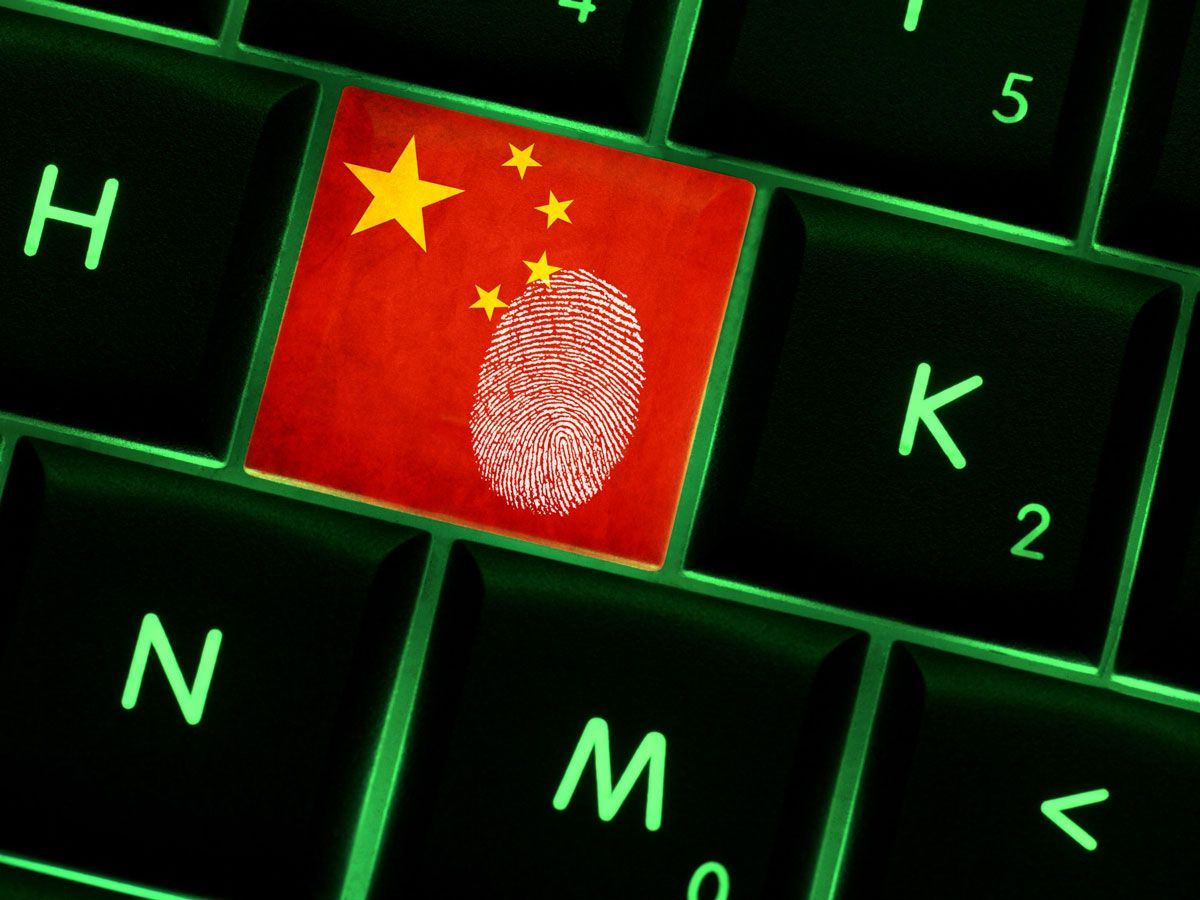Posted in Uncategorized

Appropriating U.S. manufacturers’ intellectual property provides China a competitive shortcut. A patent attorney provides ways to check China’s unscrupulous ambitions.
This article originally appeared in Industry Week on September 19th, 2018.
According to a recent 7-month investigation from the United States Trade Representative, after a recent 7-month investigation, “Chinese theft of American IP currently costs between $225 billion and $600 billion annually.” It’s driven President Donald Trump’s vociferous trade rhetoric, which has been backed up by $50 billion in tariffs on China, with another $200 billion set to be imposed on Sep. 24.
The common perception is that China has been (and still is) stealing intellectual property from the U.S. and has been doing so for a long time. Based on recent cases of IP theft, there is some truth to this.
Most people look at products colored or painted white without a second thought. However, it is a very challenging chemical problem to solve, one DuPont spent a considerable amount of time, energy and financial resources to solve the problem.
DuPont discovered using a titanium dioxide (TiO2) process to add a bold, bright white to products as diverse as Oreo’s cream filling and automotive paint.

China also wanted this vibrant hue, but rather than devote considerable time and resources to arrive at the same result, in the 1990s, China began using Walter Lian-Heen Liew, a naturalized American citizen, to approach retired, disgruntled DuPont engineers to reveal the process. One of these men, a retired mechanical engineer named Robert Maegerle, worked at DuPont for 35 years, specializing in titanium dioxide. He helped China start up a state-run factory to process the highly complex chemical.
This illegal shortcut saved China possibly years of expensive reverse engineering and allowed the production facility to be set up with relative ease. The plot was discovered and Liew was found guilty, sentenced to 15 years in prison and forced to surrender $27.8 million in illegal profits. Maegerle was also found guilty. It was the first time the Economic Espionage Act of 1996 led to a federal jury conviction.
While DuPont eventually discovered the theft of its trade secrets, the damage had been done. DuPont had kept the process as a trade secret, as filing a utility patent application entails an eventual publication of the application, except in rare circumstances involving inventions directed to national security.
Theft Comes in Many Different Forms
Not all of the theft involves “cloak-and-dagger” situations either. China has routinely required joint ventures (JVs) with American (and other foreign) companies that make theft of IP that much easier – as the American companies bring their IP to China. To explain, in order to operate in China, an American company must set up a joint venture (obviously hiring a many Chinese workers) and bring into China patents, copyrights, trademarks, and of course trade secrets – if they want to do business in China. Securing IP in these JVs is a difficult task, which has the effect of training an eventual competitor when the JV ends. Adding to the danger is China’s strict control and monitoring of the Internet so that communications (data transfers, emails, phone calls) between the American Chinese JVs can be easily monitored and intercepted.
Is China Attempting to Protect IP?
About 300 years ago, an upstart country, without much IP of its own, sought to obtain IP from the global superpower in order to boost its economy and try to level the playing field. That upstart was the US, and the source of IP was the British Empire. China may argue that the U.S. shouldn’t complain, as it benefited from IP theft. However, the amount and ease by which IP can be stolen today is literally light years away from what could be stolen when the U.S. was a developing country. So that argument doesn’t stand up to a strenuous challenge.
China is slowly gaining IP of its own that it does not want stolen or infringed upon. In 2017, there were more than 1.3 million patents filed in China and that number is only expected to increase. To put in perspective, about 600,000 patents were filed in the U.S. Patent and Trademark Office (USPTO) in the same period. It seems clear that China is trying to have things both ways – protecting its own IP while still seeking U.S. and other foreign IP through theft and subterfuge.
Recent Rampant Chinese Trademark Filings
The current Commissioner of Trademarks, Mary B. Denison, recently commented in a meeting of the Trademark Policy Advisory Council that a large number of apparently fraudulent U.S. trademark applications were filed by Chinese nationals with no intention of using the trademarks in the U.S. In some cases multiple applications for the same trademark were filed, causing trademark examiners to deal these bogus applications and taking them away from their proper work examining bona fide trademark applications. Clearly, China is working to disrupt not only the IP of U.S. companies, but also the USPTO itself.
What’s America Doing About It?
China has arguably improved its enforcement of IP rights in recent years but the continued pattern of theft of has prompted President Trump to put tariffs on $50 billion of Chinese goods. This comes after many years of trying to convince China with discussions only to end IP theft and enforce IP right rights.
China, like the U.S., is a member of the World Trade Organization (WTO) and has been for nearly 20 years. So the argument that China is “new” to following the rules of the WTO is not really believable. Using the enforcement aspects of the WTO has not been effective either. In many ways, the WTO is only as good as the ability of its members to all follow the rules.
U.S. Customs and Border Protection (CBP) has a good record of stopping infringing/counterfeit goods produced in China from entering the US, but that is a hollow victory when it happens. Since the goods have already been produced, clearly the theft of IP has already taken place and more of those products can be sent to other countries for sale to unsuspecting consumers – with the money headed back to China.
With the recent round of tariffs applied to Chinese goods, it remains to be seen if China will respond by enforcing U.S. IP rights and curtailing IP theft. China is clearly not a developing country that needs assistance to develop technology any longer. We can’t wait until China has a wealth of IP of its own to see if it will respect others’ IP. By then, it will be too late.
Very recently, the U.S. has proposed an additional $267 billion in tariffs on Chinese goods. In response, China has filed a complaint with the World Trade Organization (WTO), of which both countries are members. However, the U.S. response can be characterized as unwavering, arguing that by abusing IP rights, China is operating with blatant disregard of the WTO and the obligations of membership.
China has been making small steps to protect IP rights, however China still considers itself a developing country, despite its skyscraper-filled cities and thousands of high-tech factories. Recently, the State Intellectual Property Office (China) reported that 1.47 million patents have been registered in China, or about 10 patents for every 10,000 Chinese. Based on these numbers, maintaining the position that China is a developing country is a challenging position.
What Can Be Done to Protect U.S. IP?
As the DuPont case illustrates, IP protection isn’t limited to current employees. U.S .companies need to carefully consider any activity in China, such as JVs. While a Chinese JV may want the latest U.S. IP, it may be worthwhile to hold back the most critical IP from any Chinese JV, if such a venture is still considered.
Additionally, not only current employees, but contract employees, temporary employees, and retirees need to be reminded of the consequences of any non-disclosure agreement (NDA) that was signed as part of their employment. The U.S. government has stepped up its enforcement of trade secret and other IP theft of late, with those convicted sentenced to lengthy prison terms (if they are able to be brought in to U.S. jurisdiction).
Also, protection of electronic data, particularly in and out of China, must be carefully considered. It may be practical to set up a separate network for communication in and out of China that is separate from existing networks. As for existing networks, maintaining the best Internet security possible and considering transferring critical data out of Internet connected computers may provide additional security.
Most importantly, support for IP protection must be communicated to our elected officials so that China, as well as other countries that do not strongly enforce IP protections, get the message that business as usual has ended.
Disclaimer & Notice: The content of this article does not constitute legal advice. The information presented herein is for informational use only. Not responsible for the actions or failures of third parties. Not responsible for any action or inaction based on the content of this article. The content of this article is solely the opinion of the author(s) and may not necessarily be those of Remenick PLLC, its clients or members. Reading this article does not constitute the establishment of an attorney-client relationship. Any communication received will not be confidential unless and until an attorney-client relationship is established by an engagement letter. The content of this article may not be current as of the date of access and may be removed or updated without notice. Consult with legal counsel before undertaking any legal action.


